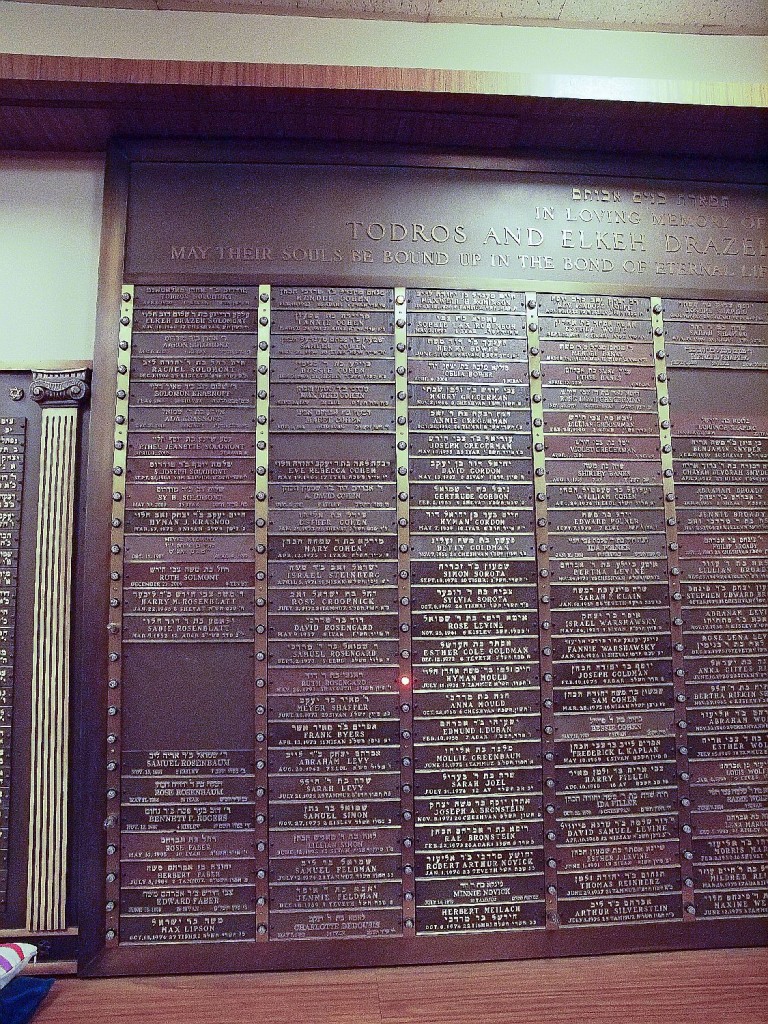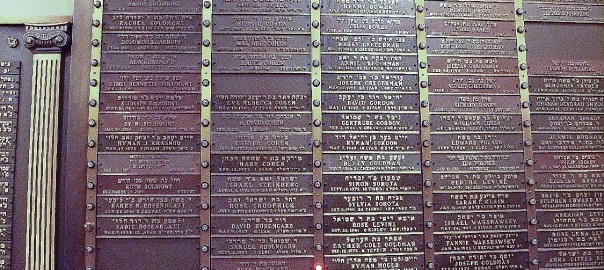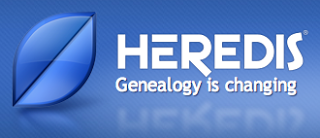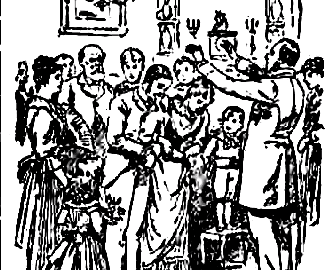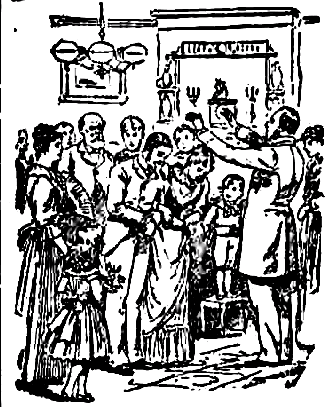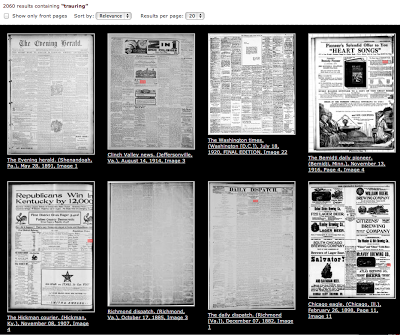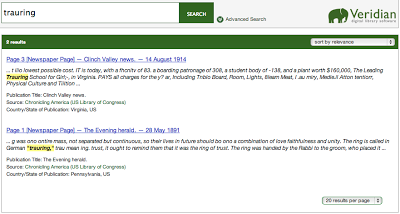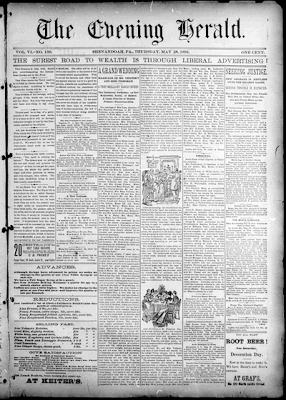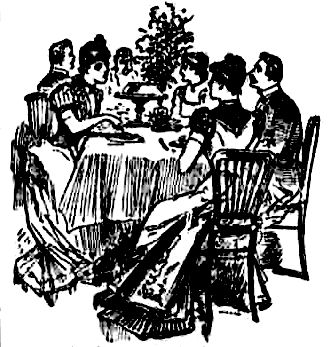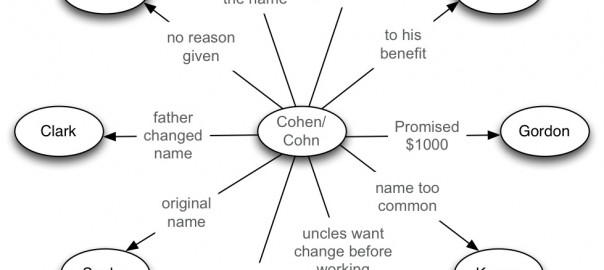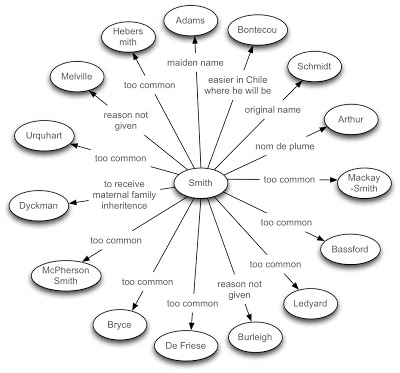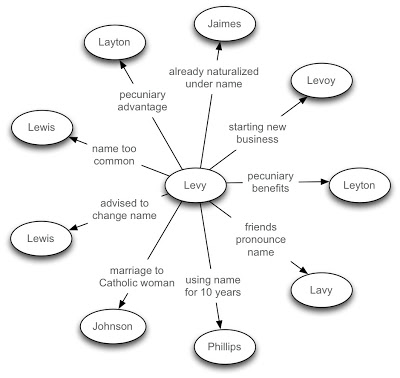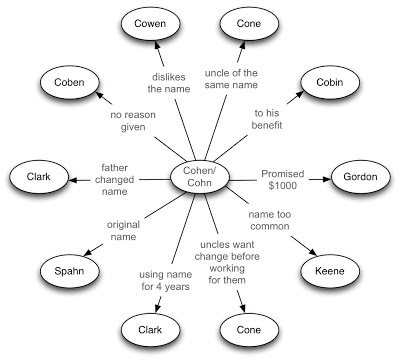Most people who research their family carry out conclusion-based genealogy. Entire family trees are built solely based on conclusions, i.e. who a person was, when they were born, where they died, etc. sometimes with little evidence to back up the conclusions being made. While building a tree without sources does not necessarily mean the tree has faulty information, it is impossible to show what is right and wrong. Where we especially run into trouble is when we try to collaborate with others in our research. Most of the popular genealogy programs that people use (
Family Tree Maker,
Legacy Family Tree,
MacFamilyTree,
Master Genealogist,
Reunion,
RootsMagic, etc.) are conclusion-based. One can use them to build a 10,000-person tree without entering a single piece of evidence. That’s not to say anything bad about these programs, they all have the ability to cite sources for each piece of data added to their databases. The problem is they do not require citations.
There is another model for genealogy research – evidence-based genealogy. This model starts with the sources. Instead of the individual being the core of the tree, the sources become the core. In most cases these programs are designed as a kind of companion app for conclusion-based apps like those mentioned above. The focus of these apps are not producing nice charts, but create a solid chain of evidence to back up each piece of information you are researching.
One of the ways evidence-based applications work is by developing a series of source templates for all kinds of sources, insuring you extract all the information out of a source when entering it into the system. One example of this are templates for each year of a census having their own templates, as each year the questions were slightly different.
In general the applications available for doing evidence-based genealogy seem to be intended as companion apps to traditional conclusion-based apps like those mentioned above. Below I’ve linked to the evidence-based applications I was able to find under active development, with blurbs from their web sites describing their applications. My observations follow this listing.
What is Clooz 3?
- A Program to Consolidate, Index, Analyze and Report Document and Image Data
- A Family History and Genealogy Research And Analysis Tool
- A Windows Desktop Application
Why Should I Use Clooz 3?
- Gather, Analyze and Validate Clues and Evidence About Potential or Suspected Ancestors
- Analyze Family History Challenges Using Factual Document-based Research Strategies
- Organize and Index Collected Documents and Images
- Support “One Name” Surname Studies (large or small)
Welcome to Custodian 3, the database software which helps you to store, index and organise the information you have gathered from all kinds of family history records.
Use Custodian for general family history research, one-name studies, indexing projects, local history and one-place studies. Keep a computer-based version of all your paper records, documents and lists in one place and minimise endless searching for paperwork.

A New Kind of Genealogy Tool
- Evidentia is genealogy software created from the ground up for the user who wants to take their research to the next level. It turns what you know into evidence you can use.
- Too many conflicting sources about Grandpa William’s birth? Evidentia presents all your evidence on one screen, making it easier for you to separate fact from fiction.
- Not sure how strong your evidence about when and where your great grandparents were married is? Evidentia’s reports help you to identify the gaps in your sources.
- Evidentia is the software program that will help you feel confident in your research.
The Family Pack is an ambitious open source project to create a new cross platform genealogy program. The project will involve designing a new genealogical database, creating a program to make use of it, and finally, organising ways of providing some standard universal data sets.
The database design owes much to the impressive GenTech Genealogical Data Model. One idea taken directly from the GenTech GDM is that of Personas. A personas is a small separate particles of information that relates to a person. We can collect these personas from separate sources and then build them up to create individual person. The database uses the concept of a Reference Statement to link together Personas, Events, Dates, Places and Attributes (Characteristics) records. This idea is loosely based on the GenTech’s Assertion record. The Reference Statement is the heart of the new database and provides a very flexible way of entering and organizing evidence. It can consist of any typed statement and could be a simple statement by the researcher reviewing other statements, a transcription of a historical documents (certificates, census, parish records etc.), a description of a photograph or transcribed tape recording.
What is GenQuiry?
GenQuiry is designed to help you manage your family history research. It was born through my own experience of researching families in Wales, trying to make sure that I made the most of my visits to archives 300 miles away, keeping track of the searches I had done and the clues I still had to follow up, and recording my reasoning for deciding which was my ancestor out of three “John James” all living in the same small Pembrokeshire parish around 1800!
If you’ve ever had problems:
- keeping track of searches you’ve made — and their results, positive or negative — and the searches that you plan to make
- planning what to do on a visit to some archives, making sure you don’t forget anything vital at the far end of that long trip
- keeping track of which sources are relevant for a particular place and how to access them, so that you don’t overlook an important clue because the existence of a source slipped your mind
- citing your sources consistently, so that you always know where a particular piece of information came from
- recording how you reached a conclusion from a variety of conflicting evidence
then GenQuiry may help you.
GenQuiry can support: family history research, one-name studies, one-place studies or research into more general topics. You can use any or all of the features, to suit the way you choose to work, and integrate it with your existing physical or electronic filing system.
While some of these applications have been around for a long time, more of them are new. This category is emerging, and I suspect there will be more applications and services that will enter this space in the future. Ideally the features of these apps would be combined with a mainstream conclusions-based application, to allow one to carry out both aspects of genealogy – person-centric conclusion-based genealogy, and document-centric evidence-based genealogy.
Clooz has been around since 1997, and is available for Windows only. Originally developed by Elizabeth Kelley Kerstens, it was sold in 2011 to Ancestral System LLC, which developed version 3 in 2012. Clooz has a mailing list, Facebook page and a separate Rootsweb mailing list.
Custodian has been around almost as long as Clooz, coming on the market in 1998. It is also Windows-only. Developed by husband-wife team Sonja and Phil Smith, the latest major version, Custodian 3, was released in 2003. Developed in the UK, it is my impression the application is a bit skewed towards UK sources, but it does provide many templates for sources in the US and elsewhere. I couldn’t find any community forum or social media page for Custodian.
Evidentia is a relatively new application, released in December 2012. Its developer, Ed Thompson, previously developed a WordPress plugin called RootsPersona for publishing family trees online. Developed using JavaFX, the application can run on Mac, Windows and even Linux. Evidentia is under very active development, and it is evolving quickly. One thing the author has tried to do recently is bring his templates in line with the formats from Elizabeth Shown Mills’ Evidence Explained. Evidentia is also designed to support the Genealogical Proof Standard. Lastly, Evidentia has a very active Google+ Community where the author interacts directly with users. It has been interesting to see the fast evolution of Evidentia, and I’m looking forward to see how it continues to evolve. One thing the author recently mentioned in the Google+ community is that version 2 will directly support images of sources, something it does not currently do.
The Family Pack is an open-source evidence-based genealogy program being developed by Nick Matthews. The application is roughly based on the GenTech Genealogical Data Model which was developed by NGS. Currently it is in pre-alpha, meaning it’s not ready for regular use. It’s also currently only being released for Windows, although it is being designed to be compiled for Linux and Mac as well (it is written using the cross-platform framework wxWidgets). The first version released was only a few months ago in March. It is still a long way from reaching production stage, but it’s worth keeping track of…
GenQuiry is a Windows application being developed by Helen Wright. It is based on Microsoft Access, and thus is unlikely to make it to another platform. It is currently in beta testing, and supported by donations. It’s not clear if that model will continue after the program reaches production. The first beta was released in January 2012. One can communicate with the author in the applications’ forum. GenQuiry was a finalist in the Rootstech 2012 Developer’s Challenge.
I haven’t used any of these applications, but I hope to work evidence-based genealogy into my genealogy workflow soon. Have you used any of these programs? Do you know of others? What do you think of them? The authors mentioned are certainly welcome to chime in as well.
